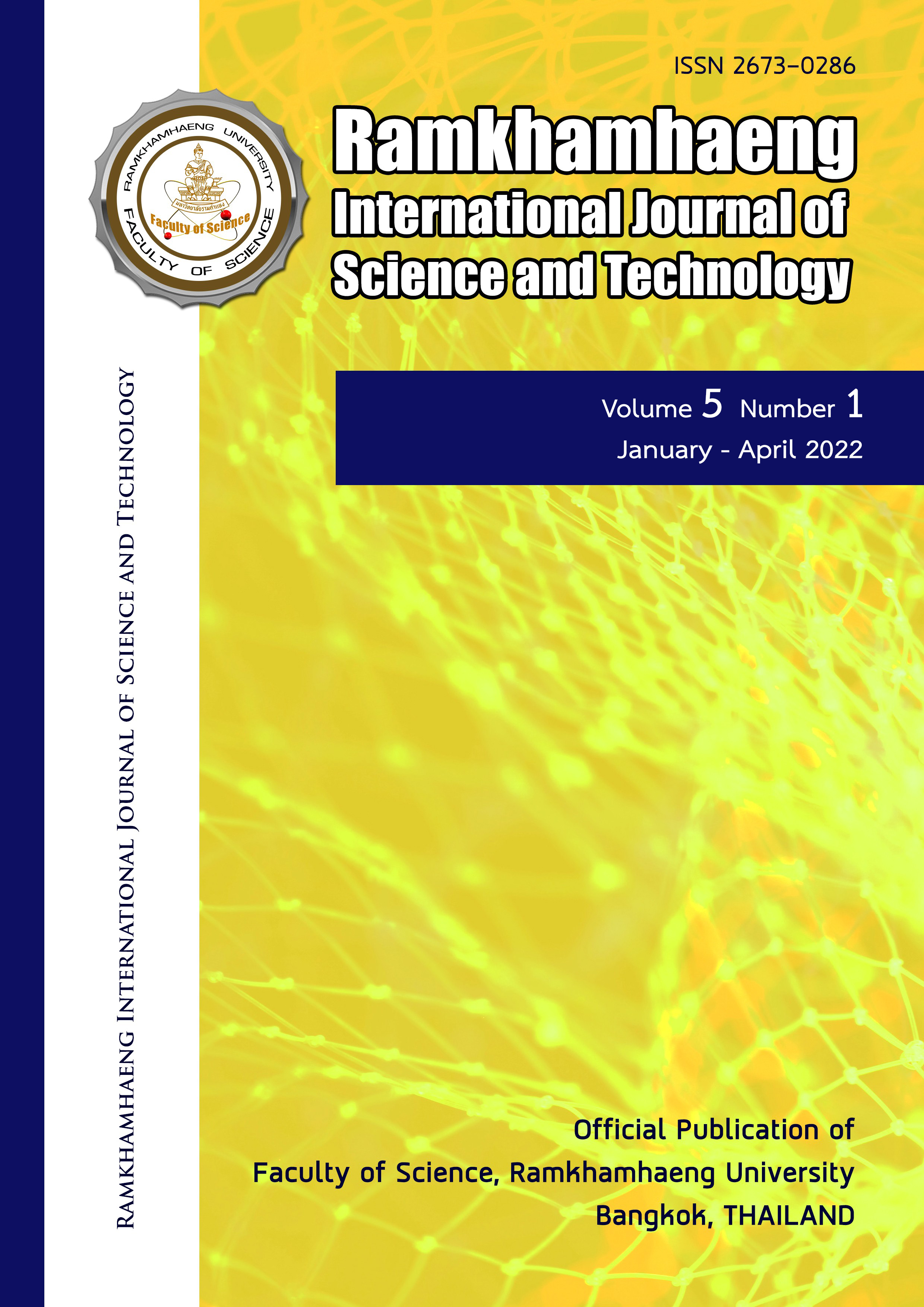Composition and abundance of meiofauna on the coral reefs at Mu Ko Surin National Park, the Andaman Sea
Keywords:
meiofauna, coral reef, Mu Ko Surin National Park, soft bottomAbstract
Coral reefs are complex ecosystems bearing the high biological diversity of the world's oceans. Assessing biodiversity and ecosystem functions is an essential step to predict the consequences of biodiversity loss. Coral reefs are the most productive and diverse marine ecosystem. Meiofauna is one of the important components in the coral reef ecosystem and is generally much more abundant than macrofauna in most marine habitats. However, meiofauna studies in tropical countries are limited. Therefore, this study aimed to investigate the composition and abundance of meiofauna in coral communities and assessed the relationship of meiofauna density and ratio of live coral per dead coral at Ao Jaak, Ao Mai Ngam, Ao Suthep, Ao Chong Khat, Ao Pak Kaad and Ao Mae Yai, Mu Ko Surin National Park, the Andaman Sea, in February 2021. Seventeen taxa of meiofauna were observed. Foraminifera, Nematoda, Copepoda and Polychaeta were the major taxa at the study sites. The highest average total density of meiofauna was observed at Ao Mai Ngam (77.45±5.47 inds. 10 cm-2) and followed by Ao Chong Khad (71.85 ± 27.04 inds. 10 cm-2). The density and composition of meiofauna were significantly varied among study sites. These positive correlations indicate that live coral cover is a contributor to meiofauna community distribution. Our results highlight that the meiofauna can play a major role in coral reef ecosystems and they may be changing in total densities and their composition that may affect the coral reef food webs under the global change crisis.
References
Coull, BC (1999) Role of meiofauna in estuarine soft-bottom habitats. Austral Ecol 24: 327-343.
Cui C, Zhang Z, Hua E (2021) Meiofaunal Community Spatial Distribution and Diversity as Indicators of Ecological Quality in the Bohai
Sea, China. J Ocean Univ China 20(2): 409-420. https://doi.org/10.1007/s11802-021-4550-5
Dezfouli TT, Nabavi SMB, Ghatromi ER, Sajjadi N (2016) Study on the meiofauna community structure in Sajafi shores as the bio-indicator of environmental pollution. Open J Ecol 6(10): 632-644. https://doi.org/10.4236/oje.2016.610059
De Troch M, Raes M, Muthumbi A, Gheerardyn H, Vanreusel A (2008) Spatial diversity of nematode and copepod genera of the coral degradation zone along the Kenyan coast, including a test for the use of higher-taxon surrogacy. African J Mar Sci 30: 25-33
Donsomjit W, Sutthacheep M, Yeemin T (2013) Meiofauna associated with degraded coral reefs at Ko Tao, the Gulf of Thailand. In: Proceedings of 39th Congress on Science and Technology of Thailand. 4pp.
Donsomjit W, Yeemin T, Sutthacheep M, Jaiharn S, Niemsiri R (2015) Composition and abundance of meiofauna from coral communities in the Eastern Gulf of Thailand. Proceedings of the 41st Congress on Science and Technology of Thailand (STT41). 480-484 p.
English S., Wilkinson C. and Baker V. (1997) Survey manual for Tropical marine resources. 2nd edition. Australian Institute of Marine Science, 390 pp.
Giangrande A,Licciano M, Musco L (2005). Polychaetes as environmental indicators revisited. Mar Poll Bull 50:1153-1162
Meunpol O, Meejing P, Piyatiratitivorakul S (2005) Maturation diet based on fatty acid ontent for male Penaeus monodon (Fabricius) broodstock. Aquac Res 6(12):1216-1225
Nabavi SMB (2013) Meiobenthos in the ROMPE Sea Area. Technical Report Series, Ropme Oceanographic Cruise.
Nederlof MAJ, Jansen HM, Dahlgren TG, Fang J, Meier S, Strand O, Sveier H, Verdegem MCJ, Smaal C (2019) Aquac Environ Interact 11: 221-237
Palmer PJ, Wang S, Houlihan A, Brock I (2014). Nutritional status of a nereidid polychaete cultured in sand filters of mariculture wastewater. Aquac Nutr 20(6): 675-691.
Ruknawee S, Yeemin, T, Sutthacheep M, True J, Piromvaragorn S, Klinthong W, Sangmanee K, Samsuvan W (2014) Meiofauna in coral communities from Krabi Province, Thailand and Mergui Archipelago, Myanmar. In: Proceedings of the 40th Congress on Science and Technology of Thailand (STT40). 855 – 859 p.
Reaka-Kudla M (1997) The global biodiversity of coral reefs: a comparison with rainforests. In: Reaka-Kudla M, Wilson DE, Wilson EO (eds) Biodiversity II: understanding and protecting our biological resources. Joseph Henry Press, pp 83–108
Sarmento VC, Pinheiro BR, Montes MdJF, Santos PJP (2017) Impact of predicted climate change scenarios on a coral reef meiofauna community. ICES J Mar Sci 74: 1170-1179. https://doi.org/10.1093/icesjms/fsw234
Semprucci F, Gravina MF, Magni P (2019) Meiofaunal dynamics and heterogeneity along salinity and trophic gradients in a Mediterranean transitional system. Water 11(7). https://doi.org/10.3390/w11071488
Service SK, Feller, RJ, Coull BC, Woods R (1992) Predation effect of three fish species and a shrimp on macrobenthos and meiobenthos in microcosms. Estuar Coast Shelf Sci 34(3): 277-293
Wolfe K, Kenyon TM, Mumby PJ (2021) The biology and ecology of coral rubble and implications for the future of coral reefs. Coral Reefs 40(6): 1769-1806. https://doi.org/10.1007/s00338-021-02185-9
Downloads
Published
Issue
Section
License
Copyright (c) 2022 Ramkhamhaeng International Journal of Science and Technology

This work is licensed under a Creative Commons Attribution-NonCommercial-NoDerivatives 4.0 International License.
Copyright Notice: a copyright on any article in the published journal is retained by the Ramkhamhaeng International Journal of Science and Technology. Readers or Users grant the right to use of the Article contained in the Content in accordance with the Creative Commons CC BY-NC-ND license and the Data contained in the Content in accordance with the Creative Commons CC BY-NC-ND.



